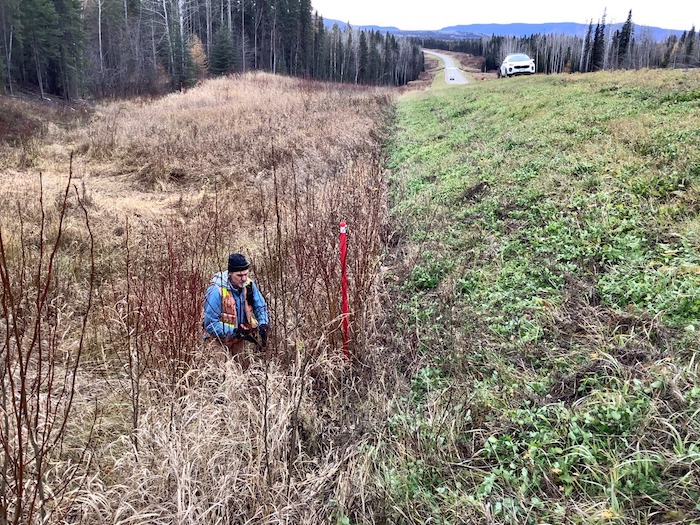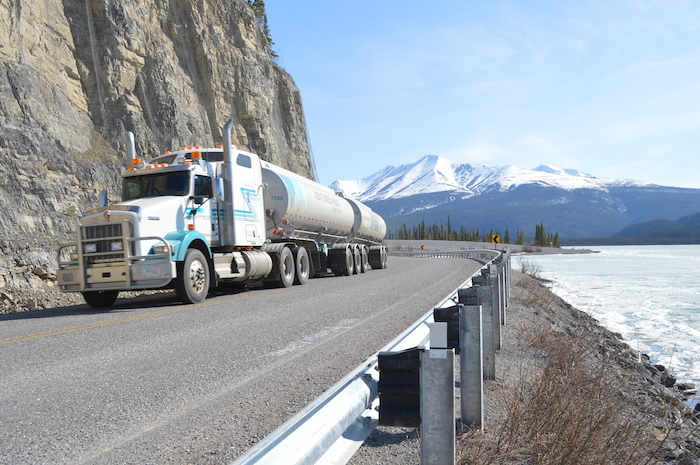
2022 #CCEawards Showcase: Adapting Infrastructure in the Face of Extreme Weather
November 9, 2022
By CCE
“An impressive project, addressing a key challenge in the transportation sector.” – Jury
Category: Transportation
Award of Excellence Winner: Tetra Tech
British Columbia’s Alaska Highway is the primary transportation corridor connecting the contiguous U.S. with Alaska. It is of high strategic importance, providing a critical link to the north. The 900-km corridor travels through several ecological regions, crosses five mountain summits and runs alongside portions of several major rivers.
Public Services and Procurement Canada (PSPC) teamed with Tetra Tech to develop a multidisciplinary study to evaluate the vulnerability of corridor assets against the potential effects of climate change. The project required an innovative approach for compiling and assessing the variety of asset components (based on type, location and condition). And then that approach had to be interwoven with a multifaceted decision-making schema to define the level of an asset’s climate resiliency risk, quantify all of the risks and weight them against social and economic drivers.
The study included the evaluation of 410 large culverts across 361 sites, 74 geotechnical hazards and the 24 bridges within the corridor.
Proactive planning
The highway is both a gateway and lifeline to the north. PSPC’s foundational responsibility in managing this transportation corridor is establishing the most cost-effective way to continue supplying the needs of Alaska’s population. This involves significant proactive planning to reduce the risk of supply chain disruptions and the isolation of local communities.
As such, Tetra Tech’s methodology calculated the societal cost of a failure of each asset in its existing condition, the societal benefit of added resiliency and the construction cost of that added resiliency.
A washout of an under-capacity culvert, for example, carries a much higher monetized consequence of failure than simply the cost of the culvert itself, as it can result in a road closure for several days or weeks. If such an event were to occur, the impact on the movement of goods and services through the transportation corridor could be catastrophic, with the resulting detours increasing travel distances by more than 1,000 km.
Developing a novel approach
Tetra Tech derived the project solution by working backward from the final objective. The team devised a methodology whereby the costs and benefits of improving the resiliency of the highway assets could be determined in such a way that these improvements could compete equitably for funding with other potential improvements. The approach, a first-of-its-kind implementation relating to transportation corridors, combined monetized risk-and-reliability with a climate change vulnerability asset management program.
The project was delivered by a team of 10 specialists within the fields of climate science, hydrotechnical engineering, geotechnical engineering, geographic information system (GIS) analysis, highway design and construction and asset management engineering. For the client, the outcome provided a credible and defendable means for justifying capital expenditure decision making.
The approach adopted and expanded on the methodology documented in the vulnerability assessment and adaptation framework developed by the U.S. Federal Highway Administration (FHWA) and built upon on a method previously developed by Tetra Tech and the U.S. Army Corps of Engineers.

Project tasks included assessing the condition of 410 large culverts across 361 sites. Photo courtesy Tetra Tech.
Establishing the costs of adding resiliency (e.g. greater capacity and protection) is straightforward, but establishing a societal cost of current and potentially increasing vulnerability, due to increasing frequency of extreme weather, is more complicated. The latter involves determining the likelihood of asset failure due not only to the increased probability of extreme events, but also to natural deterioration over a long-term planning horizon (in this case, 60 years).
The method was grounded on risk-based asset management fundamentals. The approach incorporated a means for assessing and forecasting the probability of failure for each individual asset and then assessed that failure’s consequence in dollars.
When applied to all of the Alaska Highway transportation assets, this approach provided a quantitative cost benefit or risk measure, without any of the bias that often influences such decision making. The outcome was a detailed priority ranking, where asset replacement was categorized by benefit cost, allowing for a genuinely optimal asset management plan.
While this approach addressed many of the unique characteristics of the Alaska Highway corridor, the same principles can be applied to any asset network, anywhere else in the world.
The project involved:
- data gathering from disparate sources, assembled into a project GIS.
- mass delineation of watersheds through GIS-based drainage modelling applications for the purposes of hydraulic modelling and evaluation of more than 400 drainage structures.
- geotechnical evaluations.
- developing up to five increased resiliency adaptations and associated costs for each asset class.
- developing software to complete the multi-strategy 60-year life-cycle cost analysis.
Calculating environmental benefits
Building resilience against the impacts of climate change requires technical assessments and the development of solutions within policy and programming at regional and local levels, so as to improve the ability to handle more frequent and severe weather events.
In calculating the reduction in societal costs achieved through added resiliency, the potential for reduction in greenhouse gas (GHG) emissions was one of the benefits to be quantified. If a road segment is closed, for example, there will be increased user delays and/or detours, in addition to the costs of reinstating the lost infrastructure. The construction, delay and detour activities all generate GHGs through fuel consumption. Tetra Tech quantified and monetized these increased GHGs in its economic analysis of risk reduction.
Uncalculated environmental benefits are also accrued in the form of protection of downstream habitat, reduced turbidity, etc., that are intrinsic to the reduction in probability of a washout event. When assets last longer and perform better, they limit the need for future replacement and restoration, thereby reducing the consumption of natural resource and construction materials.
Adapting Infrastructure in the Face of Extreme Weather, Alaska Highway, B.C.
Award-winning firm (prime consultant): Tetra Tech, Vancouver. (Gary St. Michel, P.Eng.; David Moschini, P.Eng.; Albert Leung, M.A.Sc., P.Eng., PE; Travis Miguez, B.Sc., P.Met.; Afzal Waseem, M.A.Sc., P.Eng.; Gordon Fung, P.Eng.; Chironjeev Kanjilal, B.Sc., B.Mus.; Mark Aylward-Nally, P.Eng.; Matt Keleher, B.Eng., EIT).
Owner: Public Services and Procurement Canada (PSPC).
Other key players: Paul Frame, P.Eng., PSPC (chief engineer, Alaska Highway).
